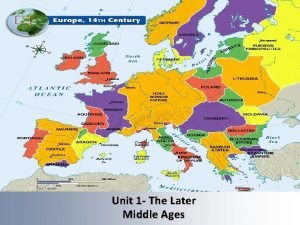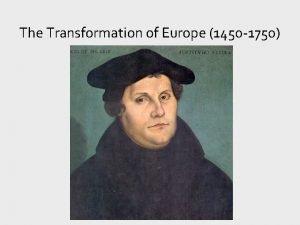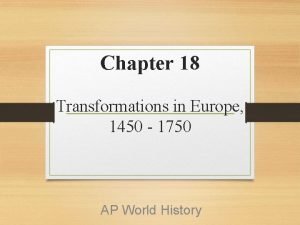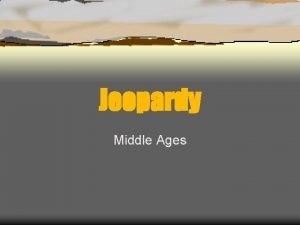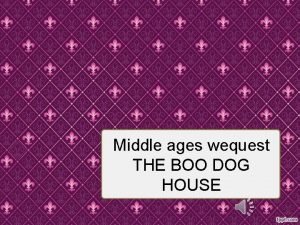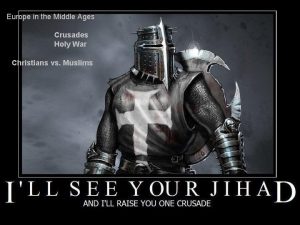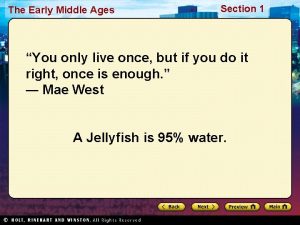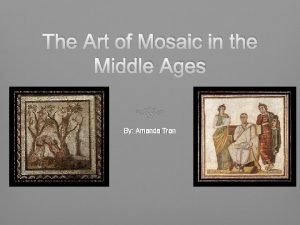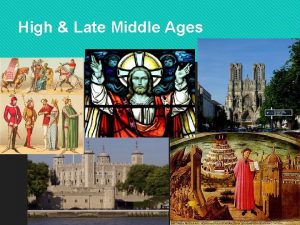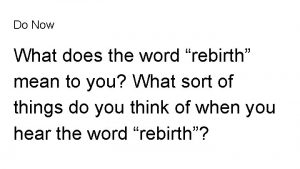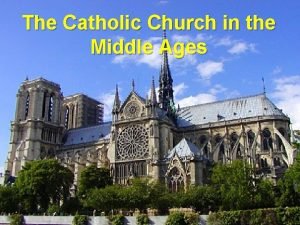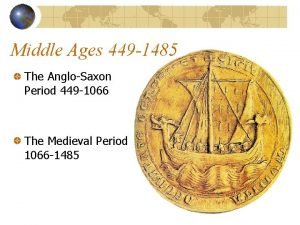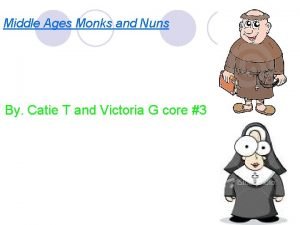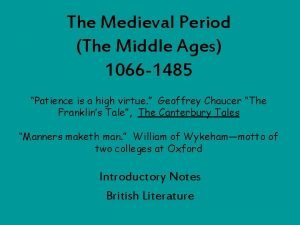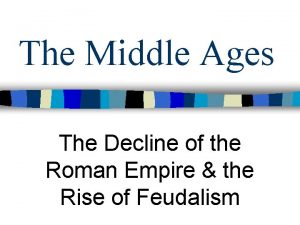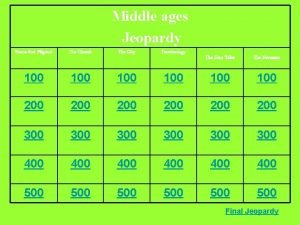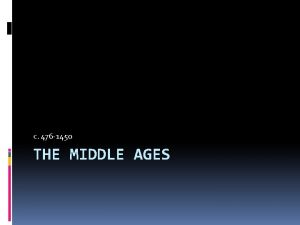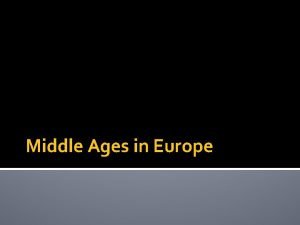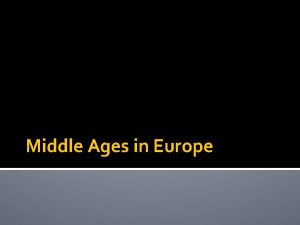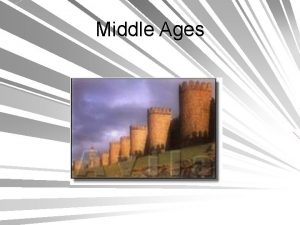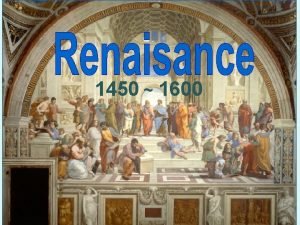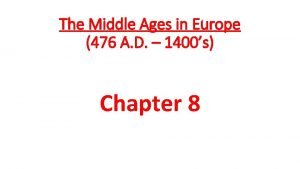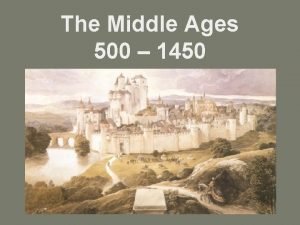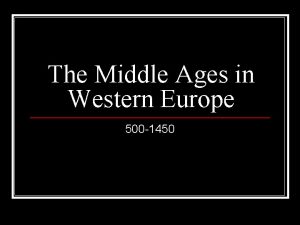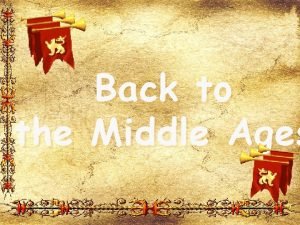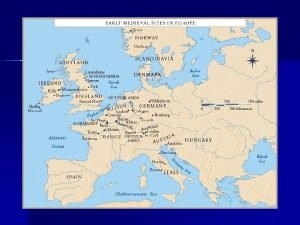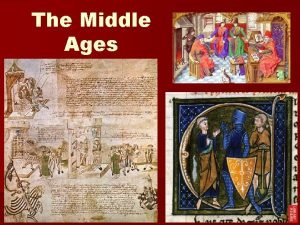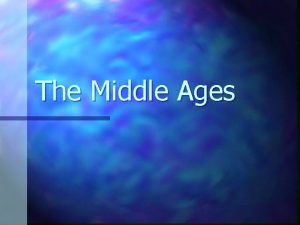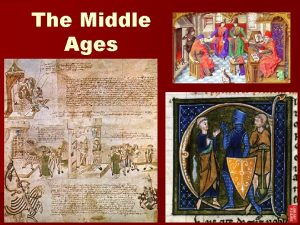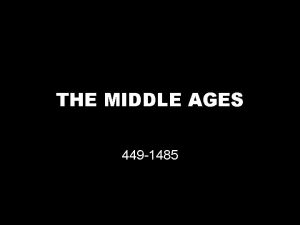The Middle Ages 476 1450 Europe in the




















- Slides: 20

The Middle Ages: 476 -1450

Europe in the 500 s CE Effects of the Roman Empire’s Collapse -Population reduced by over 25% -Lack of centralization in government – strong local elites took control of smaller areas - Christianity provided limited unity throughout Europe - New Germanic rulers of disunited kingdoms tried to retain some aspects of Rome (they admired it!) - Germanic people become the “dominant peoples”

The Medieval Catholic Church vmonasticism: monks & nuns living together in organized communities vpoverty, chastity, and obedience. § provided schools § monasteries = inns, hospitals, refuge § libraries & scriptoria to copy books and illuminate manuscripts. § monks missionaries

A Medieval Monk’s Day

The Power of the Medieval Church vchurch controlled 1/3 of the land in Western Europe. v tithe 1/10 tax given to the church. v. Canon law: The Law of the Church

Pope Crowned Charlemagne Holy Roman Emperor: Dec. 25, 800 Europe does briefly experience some unity under the rule of Charlemagne (“Charles the Great”)

The Government Structure of Medieval Western Europe

Feudalism • A political and social system based on loyalty, land, and military service. -Occurs due to weakness in the centralized government - As central authority breaks down, people look to local leaders for protection Serf: Landless peasant who offers labor in exchange for protection Fief: A grant of land in return for a pledge to provide military service

Feudalism Structure

The Economic System of Medieval Western Europe

Manorialism • An localized economic system • Needed products were made on a large land estate called a Manor • Barter was common • Trade was not as prominent

The Medieval Manor

Life on the Medieval Manor Serfs at work

The Late Middle Ages -Increasing stability and security in Western Europe -Climate change (warmer!) -Population grew from 35 million people to 80 million people by 1340 -Growth of trade due to agricultural expansion

Changes During the Late Middle Ages • Populations of cities and towns grew • New sources of power (wind & water) increased production • Trade picked up in the Mediterranean • Groups of people organized themselves into guilds

Medieval Guilds Guild Hall Associations of Craftsmen controlling trades (ex: shoe makers, stained glass makers, etc. ) § Controlled membership apprentice journeyman master craftsman § Controlled quality of the product & prices

Popes vs. Kings • Relationship between the Church and State became more tense as Kings began to centralize control • Pope Gregory VII vs. Henry IV of France • Investiture Controversy – Issues over appointments – Papacy over the crown?

Magna Carta, 1215: ENGLAND v English Kings had the most difficulty centralizing control v“Great Charter” v kings had to consult a council of advisors to tax v Rights of NOBILTY

Christian Crusades

Pope Urban II: Preaching a Crusade -Series of “Holy Wars” with a goal to recapture the Holy Lands (E. Mediterranean) from Muslims -Viewed as being done at God’s command authorized by the Pope -Results: Europe came into contact with more advanced civilizations to the East, trade picked up, more luxury goods flowed into Europe
 Dark ages def
Dark ages def Dark ages vs middle ages
Dark ages vs middle ages Map of europe in middle ages
Map of europe in middle ages Art of emerging europe example
Art of emerging europe example Europe 1450
Europe 1450 Europe map 1750
Europe map 1750 Middle ages jeopardy
Middle ages jeopardy During the middle ages noblewomen had
During the middle ages noblewomen had Middle ages
Middle ages Middle ages nobles
Middle ages nobles Medieval period mosaic
Medieval period mosaic Copyright
Copyright What word means rebirth
What word means rebirth Middle ages
Middle ages Middle ages description
Middle ages description Middle ages
Middle ages Monks and nuns middle ages
Monks and nuns middle ages Middle english period (1066-1500)
Middle english period (1066-1500) Middle ages
Middle ages Art deco floral design history
Art deco floral design history Language answer
Language answer


